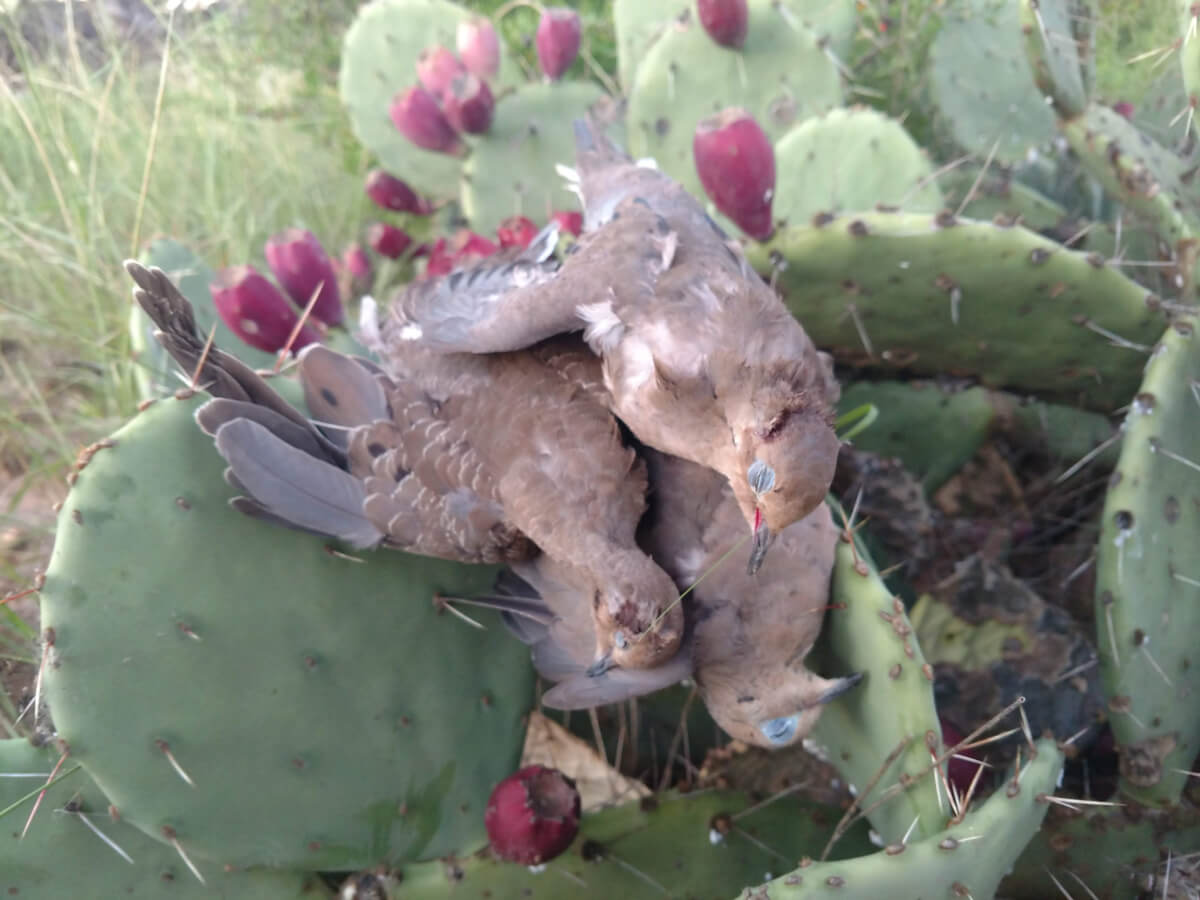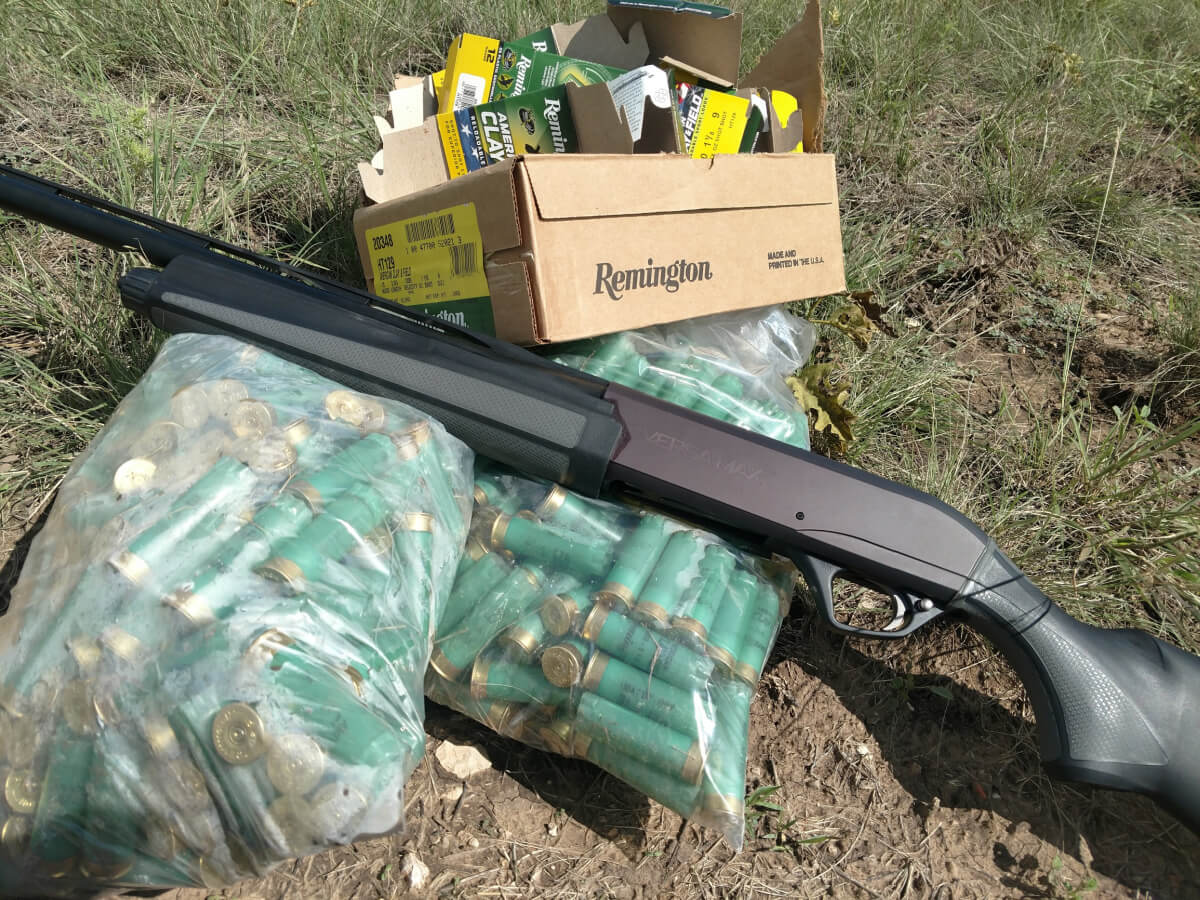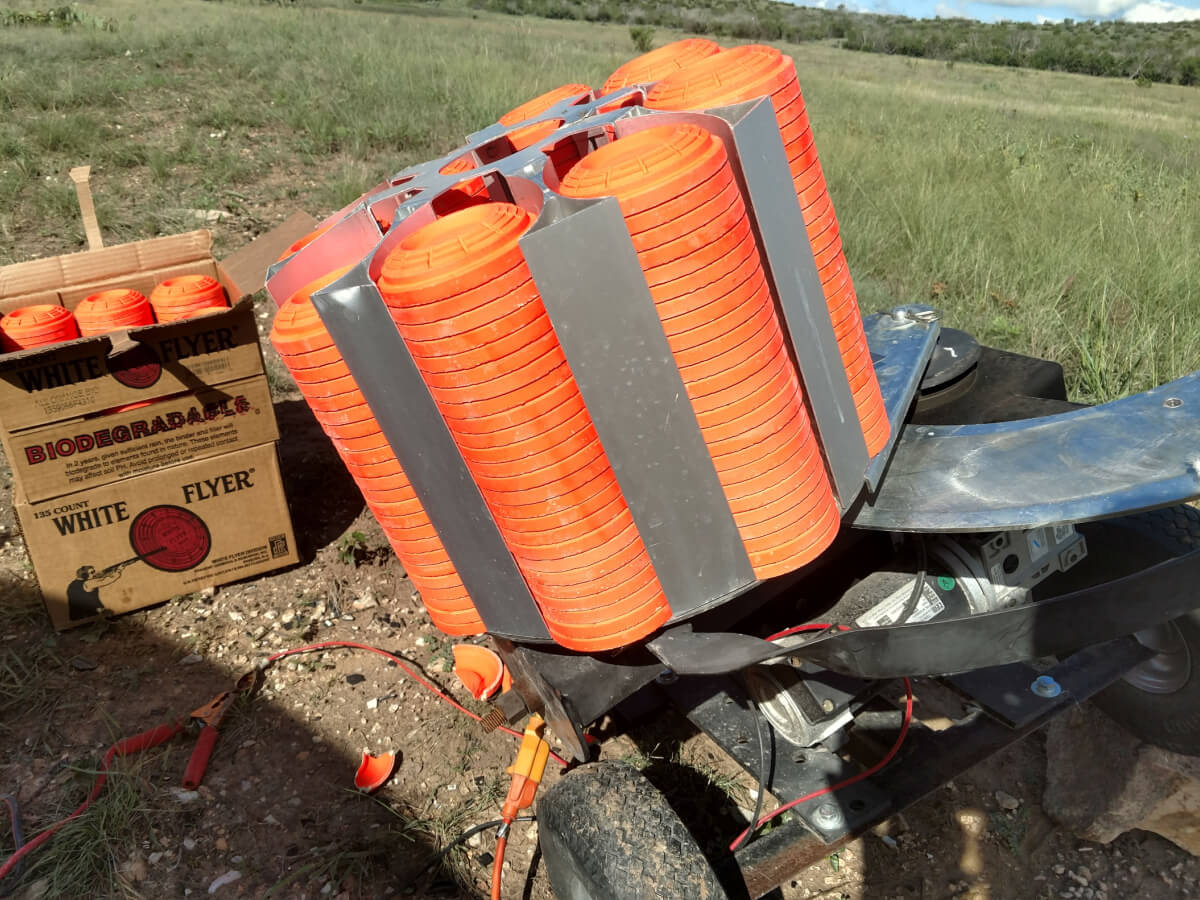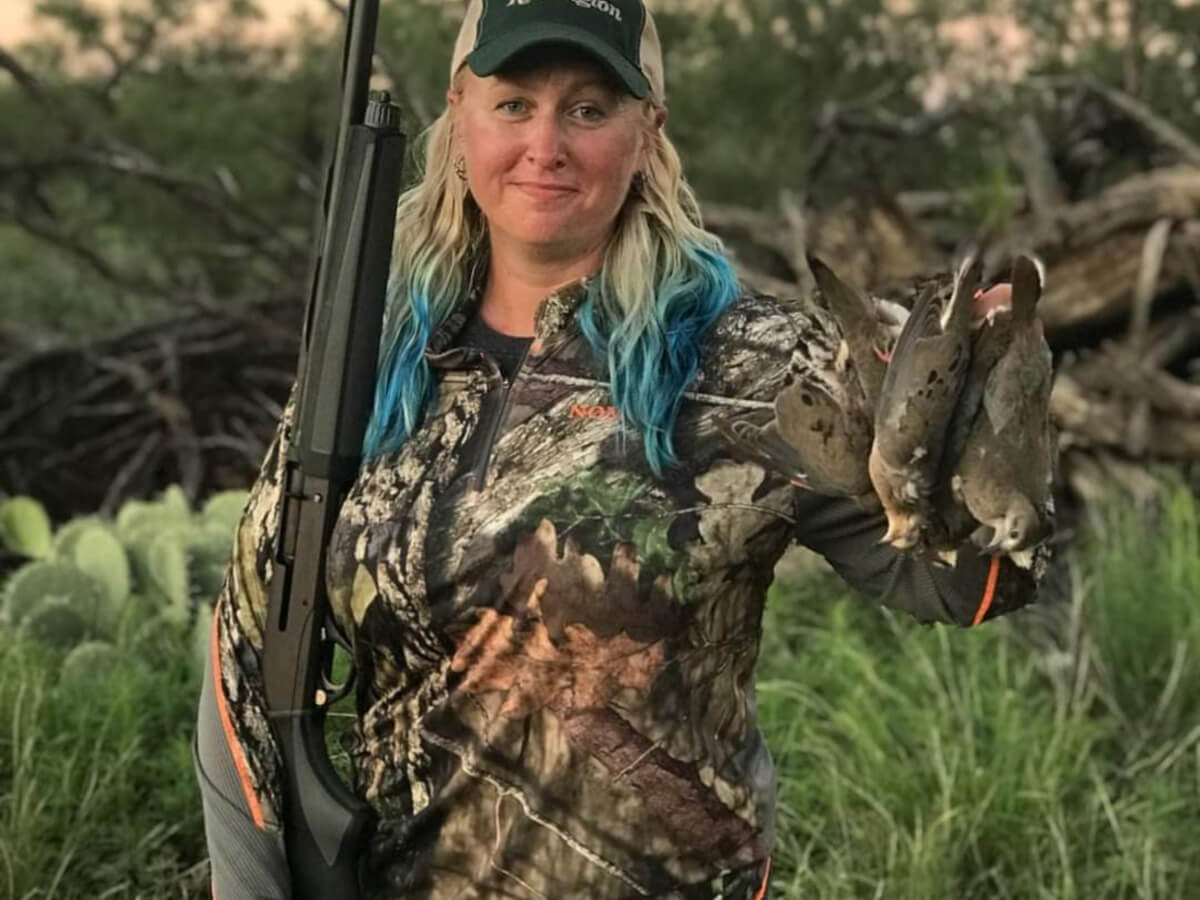Dove Hunting: Tips, Tricks, and Recipes
by Kat Ainsworth | Published: Sep 27, 2024
Estimated reading time: 9 minutes
When August rolls into September, wingshooters are all about one thing—dove season. The bird of peace happens to make fantastic poppers, and the additional layer of challenge you get out of hunting them is a bonus, too. Whether you’re hitting the fields for dove season right now or trying to decide if you want to add a hunting season to your whitetail habit, we’re here to help. Consider this your one-stop guide for tips, tricks, and recipes for the tastiest tiny birds on the wingshooting menu.

Table of contents
What Is Dove Hunting?

This one is a little self-explanatory. Dove hunting is the practice of shooting the named birds for their meat, but there’s more to it than that. Dove hunting is something of a ritual opener to All Things Fall. In states like Texas, it’s the season that kicks off the rest—deer, turkey, waterfowl, and sandhill crane. It’s like a solid opening band for the headlining act (because like it or not, deer season remains at the top).
At its simplest, dove hunting is the practice of shooting a migratory bird of which there are many species. There are about 300 species of dove, but hunters only go after a handful. The most popular and legal to hunt are the mourning dove, white-winged dove, white-winged dove, and Eurasian collared dove. Because they’re migratory they do the usual thing and show up in impressive flights a few weeks before the season that then disperse from legal hunting areas on opening day—at least that’s how it seems many years.

What Do You Need to Go Dove Hunting?
Aside from needing a place to hunt, the top three things you’ll need for a successful dove hunt are a good shotgun, a pile of shotshells, and your hunting license—the latter of which has a few extra steps. With that license, you’re probably going to need a little extra, depending on the state you’re in. In states like Texas and Georgia, you’ll need an additional Migratory Game Bird Endorsement that may or may not involve an extra fee. And in every state where you’re chasing migratory birds, you’re going to need a Harvest Information Program (HIP) certificate. Always check the regulations where you’re hunting, because it’s your responsibility to know the law and follow it. Claiming ignorance of the law is never a valid legal defense, so don’t think you can try that with your local game warden if there’s a problem.
(Of course, you don’t want to forget your ear pro, because you want to be able to hear what’s going on around you for years to come.)

Tips For a Successful Dove Hunt
There are a few things you need to know before you hit your nearest milo field. Dove hunting is a great way to get into wingshooting and is also a good way to spend laid-back time with friends who hunt. You don’t have to worry about being quiet, you can sit down around a field and relax, and when it’s all done you get dove poppers.
Check out these tips for common regulations:
- Longer-barreled shotguns are nice but not required, although they do make your life a bit easier. I’ve had awesome dove hunts with 18-inch barrels. And yes, you must use a shotgun.
- 12-gauge and 20-gauge shotguns are the most commonly used for dove hunting.
- Other legal methods allowed in most—but not all—states include archery and falconry.
- Dogs can be used to retrieve birds.
- Manual and mouth calls are allowed, but you won’t usually find anything electronic being lawful for use.
- There’s a capacity limit of 3, so if your shotgun has a greater capacity than 3 you’ll have to use a plug to drop it to the legal amount. The rule of plugs is typically that they can’t be easy to remove but must require some level of disassembly of the gun.
- Shotguns usually can’t be larger than 10-gauge.
- Non-toxic shotshells such as steel, bismuth-tin, tungsten-iron, and tungsten-polymer are required. No lead shot.
- Know the daily limit. In Texas, it’s 15 a day, no more than two of which can be white-tipped (yes, you need to be able to identify your birds).
- You can use a suppressor for dove hunting in most—but not all—states. Check your local laws. The additional size of the suppressor takes some getting used to but it makes having conversations with your fellow hunters a lot easier (assuming everyone’s shooting suppressed).

Tips For Getting Your Daily Limit:
- Swing through, meaning you swing your gun on target and keep it moving as you take the shot. Don’t hesitate or let yourself stop to pull the trigger—keep it going.
- Leading, meaning you’re keeping your shotgun aimed ahead of the dove waiting to take the perfect shot. The downside to this is it’s easier to time badly and miss. Doves are fast, small targets.
- Practice on clays. Although they don’t have the unpredictability of a dove, clays are excellent for getting your wingshooting skills warmed up.
- Don’t be target-focused. If you’re staring at the birds you won’t be paying enough attention to where that front bead is aiming.
- Use an improved cylinder (IC) choke, or possibly a modified (M) choke. Generally, a wider open choke gets you better results on the dove, and IC chokes are versatile and effective. IC is preferable over M if you’re using decoys and expect the birds to come in closer.
- Use No. 8 or No. 7 ½ shotshells. Remember, it must be non-toxic.
- Freshly cut fields attract doves. Milo, millet, and sunflower fields are favored by doves, but that doesn’t mean they won’t show up anywhere else.
- Scouting is worth it, and while you’re at it, keep an eye out for what corners of the fields the birds are flying in and out of most frequently. Just don’t scout too soon, because doves do tend to move.
- Try to aim for the dove’s eye and take the time to let it get close.
- Don’t shoot just for the sake of shooting. Take time to line up shots and only shoot at birds you can hit. It’s not at all uncommon for dove hunters to have a giant pile of spent shells and only two or three birds to show for it.

How Do You Cook Doves?
The best answer for how to cook the doves you shoot is dove poppers. These tasty morsels are almost a religious experience, they’re so good. Here’s what you’ll need:
- 12 dove breasts
- 12 jalapenos, cut in half lengthwise
- 1 8-ounce block of cream cheese, softened
- 1 cup extra sharp shredded cheese, shredded
- 2 cloves finely chopped garlic
- 1 package of thin bacon
- Optional: Meat Church Holy Voodoo or similar seasoning
Directions are simple. Combine cream cheese, cheddar cheese, and garlic in a bowl. Breasts should be de-boned and seasoned if you want them seasoned. Fill your halved jalapenos with the cheese mixture, top them with a breast, and wrap the whole thing in bacon. An hour on the smoker at 300 degrees and you have some of the greatest things ever made. An optional twist is adding chopped brisket to the jalapeno mixture (and it’s amazing).
Creativity
If you don’t want dove poppers—a horrifying thought, really—there are other options. There’s always chicken fried dove breasts—dove nuggets if you will—and pan-seared dove. I’ve even slow-cooked a pile of them and pulled the meat apart to make tiny dove sliders. Be creative! There’s no reason you can’t make whatever you want. Poppers aren’t the law. Some hunters will eat the wings and legs as well but given the minute amount of meat, it isn’t that common. That doesn’t mean you can’t, because you can, only that it will take a lot of extra effort for less than a mouthful of meat.
READ MORE: A Deep Dive into the Hunter NRL: Lessons Learned and Essential Gear
Dove hunting is a lot of fun and a fantastic way to kick off your bigger, more gear-intensive seasons. Out here all I have to do is take my shotgun, dog, and camp chair out and see what shows up. It’s a more laid-back sport and although the quantities of meat might seem disappointing, it’s still worth it. Dove breasts taste wonderful and the process of getting them is fun. Really, what more can you ask for from a hunt than good times and great food?
Want to learn more about dove hunting laws? Check out this guide to related laws by state.
This Article
- Category: Hunting
- Including: Upland Game
EPIC ADVENTURES START HERE!
No spam. Just the latest releases and tips, interesting articles, and early access to exclusive offers and premium content.